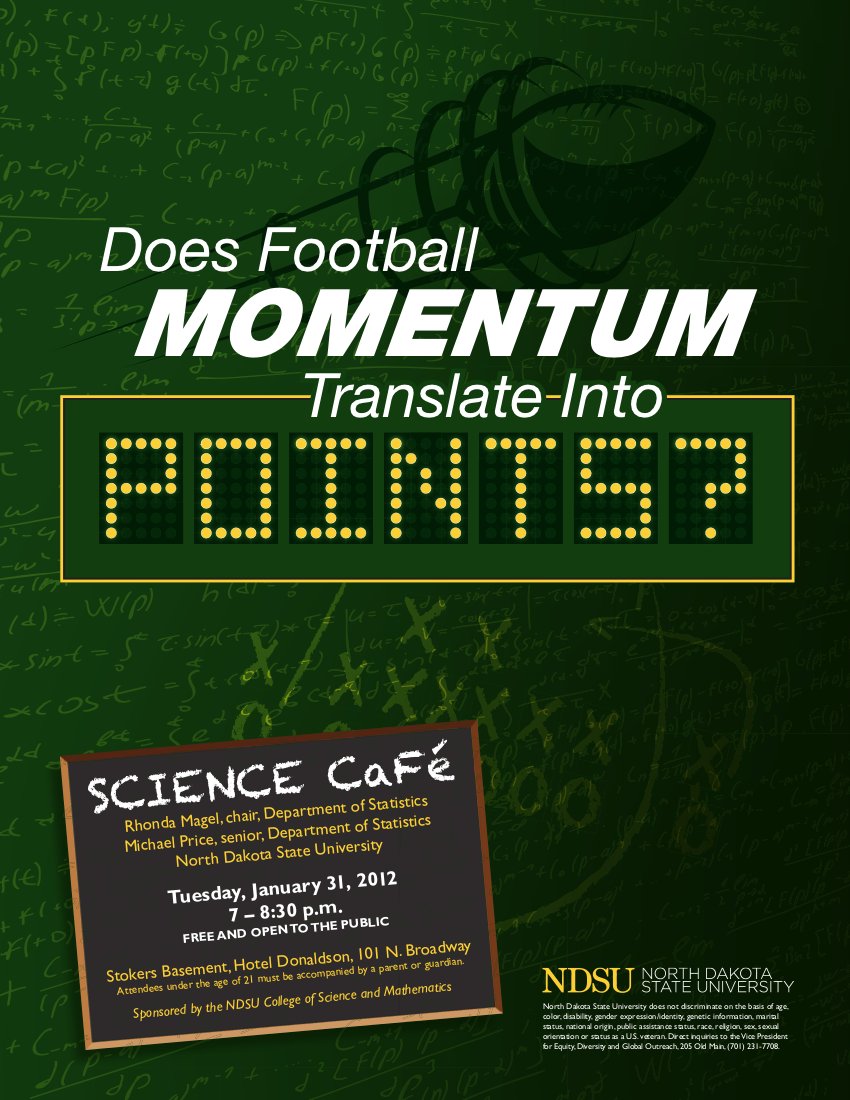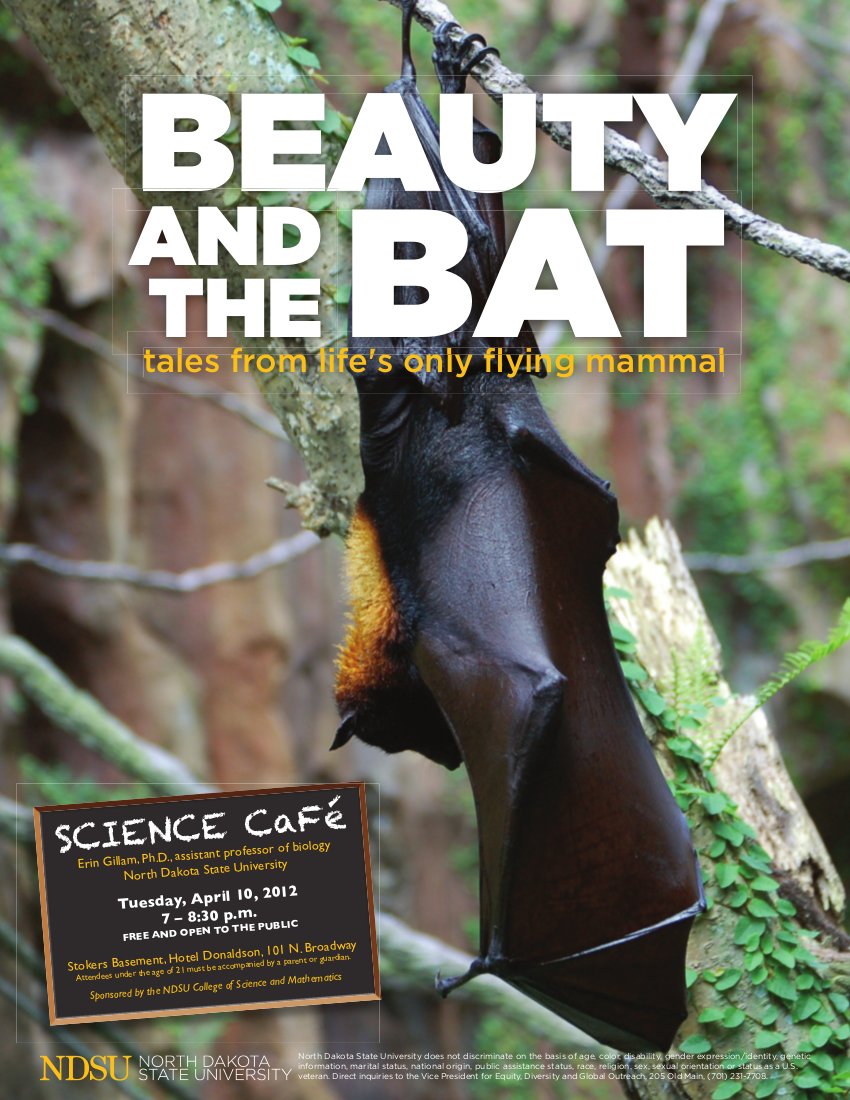
Does Football Momentum Translate Into Points?
Rhonda Magel† , Michael Price‡
†Department of Statistics,
North Dakota State University, ‡Department of Mathematics,
North Dakota State University
There are many interesting questions about football. Statistics can be an effective tool for answering these questions. In this talk we demonstrate the application of statistics to two questions. The first question is: “Does football momentum translate into points?” The average number of points obtained from the possession following an interception or fumble recovery in NFL is compared with the average number of points obtained from a possession with a first down starting in the same location on the field. The second question is: “Can turnover margin help predict victory in a football game?” The probability of a team winning the game is estimated based on turnover margin while controlling for home field advantage. The model developed is used to predict the outcome of games in the next NFL season.

When getting it wrong means they're getting right: What children's errors tell us about their language skills
Erin Conwell
Department of Psychology, North Dakota State University
Children learning to talk often start off fine but then suddenly begin saying things that aren't quite right. They “holded” the kitten, “goed” to the store and “falled” the book. Parents may think these errors are cute, or possibly cause for concern, but language development researchers take them as evidence of a very sophisticated understanding of English. When children make such errors they are testing the limits of their language and exploring the relationship between words, rules and meaning. This presentation will examine the forms these errors take, what they tell us about language development, how scientists try to trick children into making them for research purposes and why trying to correct them probably isn't going to work.

Beauty and the Bat: Tales from Life's Only Flying Mammal
Erin Gillam
Department of Biological Sciences, North Dakota State University
When many people think of bats, the first things to come to mind are images of Dracula and other scary creatures of the night. Despite the generally bad reputation of bats, these fascinating animals are an important part of many ecosystems and exhibit a wide variety of interesting behaviors. Did you know that there are bats that live primarily in spider webs? Or that some male bats produce complex mating songs to attract females? This talk will focus on a variety of topics related to the biology of bats, including common myths (bats don't actually fly into your hair, but vampire bats are real!), and information about types of food eaten and habitats used by bat species around the world. We will also talk about research being conducted at NDSU on local bat populations in North Dakota, as well as White-Nose Syndrome, an emerging infectious disease that poses the biggest threat to North American bats in recorded history. Discussion will focus on these topics, as well as any other questions that audience members have about bats.